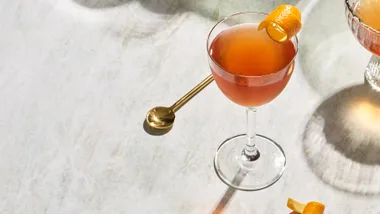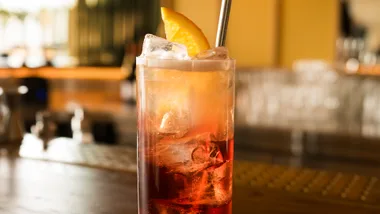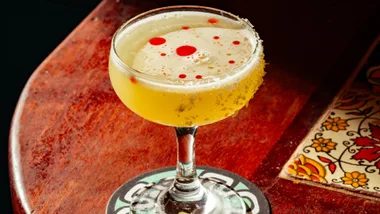Stanley Tucci made the Negroni the must-drink cocktail of lockdown 2020, thank to his YouTube masterclass guiding viewers on how to make the classic Italian cocktail. But the ruby red drink has been a crowd-pleaser for more than a century.
According to some, the Italian apéritif was originally fashioned in 1919, when Count Camillo Negroni asked a local Florentine bartender to strengthen his Americano – traditionally vermouth, Campari and soda – with gin.
Since then, the stiff, herbaceous drink has gained a reputation for being dangerously powerful on an empty stomach. Yet, with its delightful orange twist, it’s an after-dinner digestif as much as an apéritif, too. As the late Anthony Bourdain once said: “It sets you up for dinner, in a way it makes you hungry, sands the edges off the afternoon. After dinner, it’s settling. It’s a rare drink that can do that.”
Variations include the White Negroni, featuring gin, Lillet Blanc and suze; the Negroni Sbagliato, which substitutes gin with sparkling wine or prosecco; and the Tegroni, which sees tequila added to the mix.
Although Campari is the traditional choice for a classic Negroni, we like to give this drink an Australian twist with native botanical liqueurs.
Three liqueurs to try in your Negroni
Disclosure: This article contains some affiliate links. Gourmet Traveller may receive a small commission from purchases made through select links on this page.
ADELAIDE HILLS Bitter Orange Aperitif
This floral, orange bitter mixes Australian and European botanicals to create a fragrant blend that’s suited to a Negroni.
$59 for 700ml, vintagecellars.com.au
APPLEWOOD DISTILLERY Okar Island Bitter
Forged from native riberries, Davidson plum and strawberry gum leaf, this rounded Amaro spirit is both fruity and bitter.
$55 for 750ml, applewooddistillery.com.au
POOR TOMS Imbroglio Amaro
The product of 25 “outrageous” fruits and herbs, Imbroglio delivers a bold and aromatic flavour.
$45 for 500ml, poortoms.com and danmurphys.com.au
Ingredients
Method
For extra points, rub the orange peel around the rim of the glass, then squeeze the peel across an open flame to release a burst of flamed oil across the surface of the drink.
Notes
 Will Horner
Will Horner









